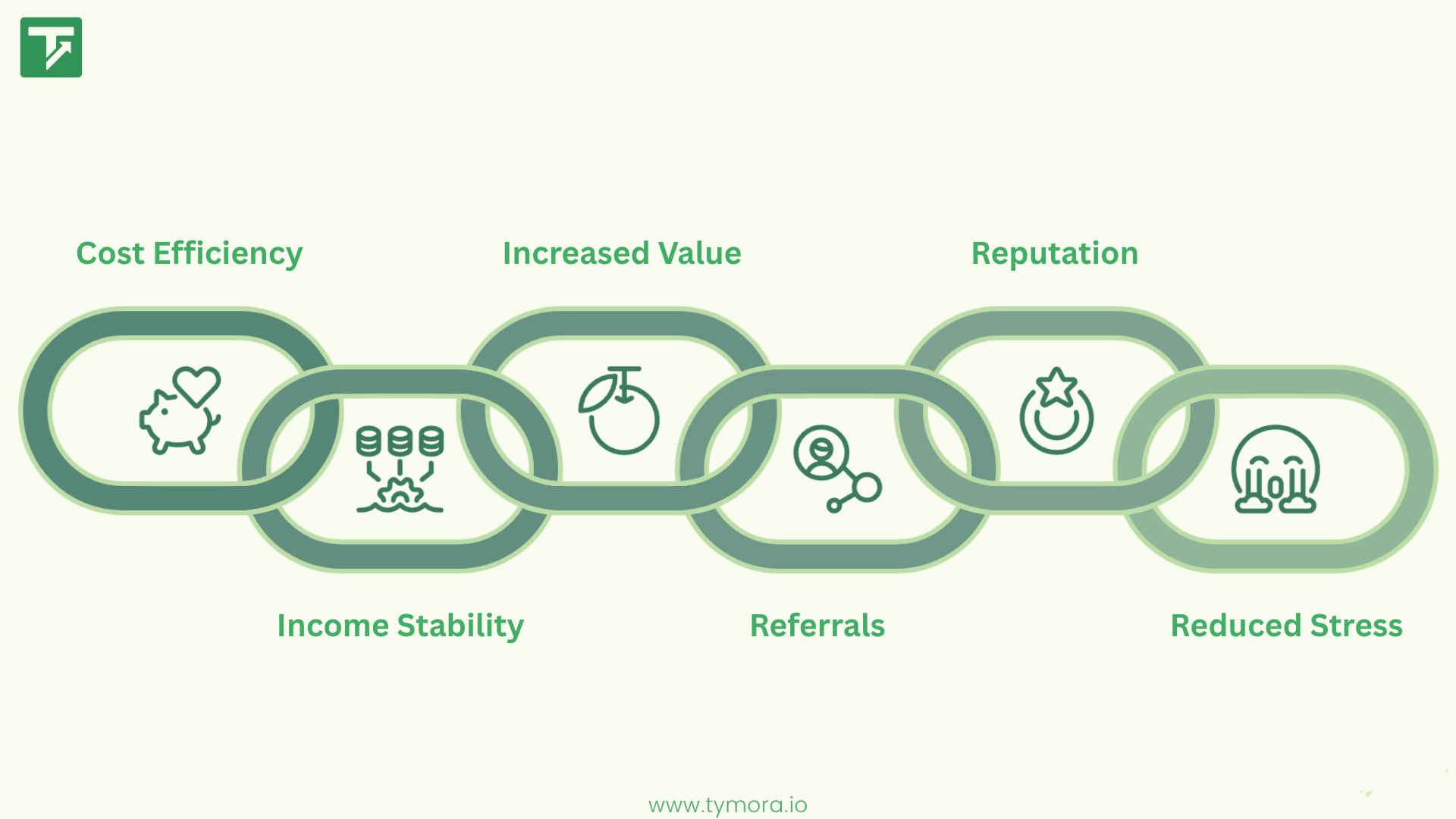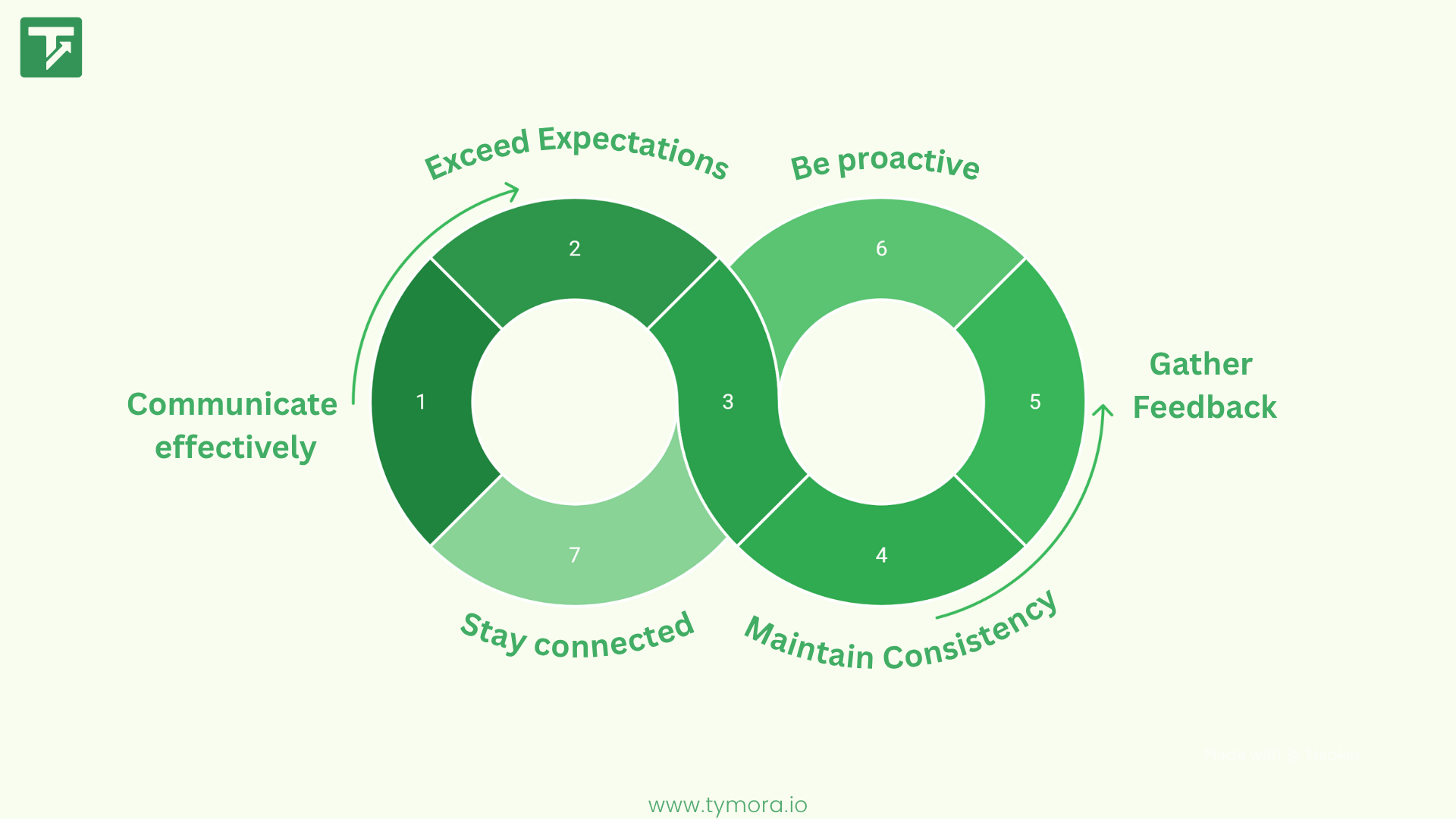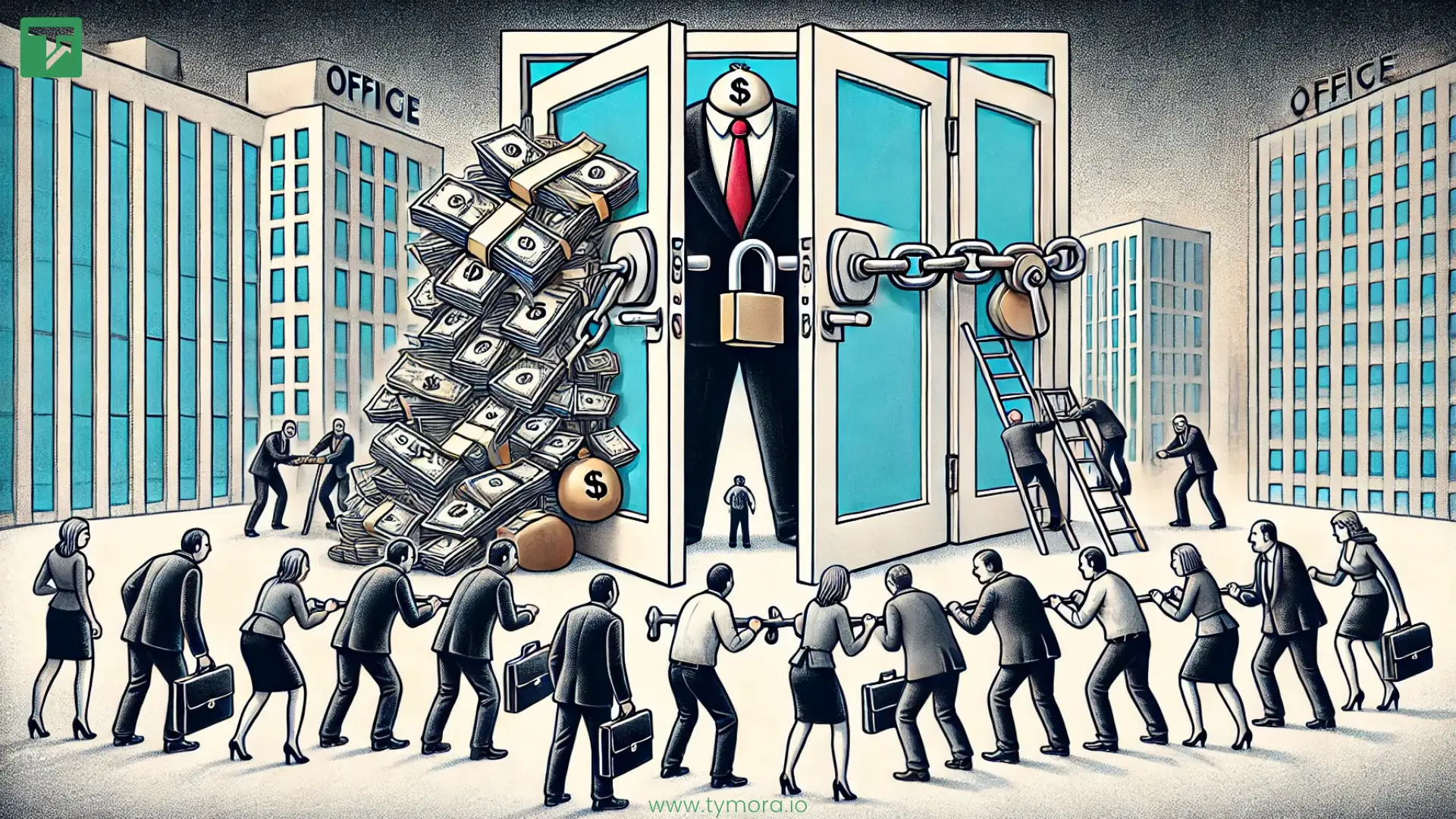Client Retention Strategies for a Freelancer: 7 Secrets That Work

If you’ve just started freelancing, you probably spend a lot of time thinking about how to land new clients. That’s normal, it’s exciting to get that first “yes.” But here’s a secret that most beginners overlook: long-term success isn’t just about finding clients, it’s about keeping them. And that’s where client retention strategies for a freelancer make all the difference.
In 2025, freelancing platforms like Upwork, Fiverr, and LinkedIn are more competitive than ever. Standing out to win projects is hard, but keeping a client once you’ve earned their trust can save you hours of chasing new work.
This blog will break down, step by step, why client retention matters, proven strategies that actually work, common mistakes to avoid, tools to help you, and even how to decide if a client is worth retaining.
Table of Contents
Why Client Retention Matters in Freelancing?

Let me ask you something. Do you ever feel like freelancing is just this never-ending cycle of chasing clients? You send proposal after proposal, some clients ghost you, and even when you finally land a project it ends too quickly. And suddenly, you’re back at square one. Exhausting, right?
This is the pain point most freelancers struggle with: unstable income and constant client hunting. For this reason, it’s essential for freelancers to develop client retention techniques. Working intelligently is equally as important as working hard.
1. It’s Cheaper to Retain Than to Chase
To put it another way, acquiring new customers is like continuously filling a leaky bucket. Water pours in yet continues to drain out. Retaining a client means plugging those leaks.
Retaining current clients is 5–25 times less expensive than acquiring new ones, according to the Harvard Business Review. This means that as a freelancer, you will spend more time making money and less time looking for work.
Therefore, it would be wise for a freelancer to focus on customer retention techniques that convert one-time engagements into regular employment rather than relentlessly pursuing them.
2. Retention = Stable, Predictable Income
Freelancing often feels like a rollercoaster: one month you’re loaded with projects, the next month nothing. Retained clients fix this problem.
Imagine this: instead of 10 small projects from random people, you have 3 steady clients who give you work every month. Suddenly, your income isn’t a gamble it’s predictable. In fact, a Freelancer’s Union report found that freelancers with retainer clients earn 32% more annually.
And guess what helps you get there? Yep client retention strategies for a freelancer.
3. Loyal Clients Pay More Over Time
Here’s something beginners often miss: long-term clients usually pay you more. Why?
- They trust your work.
- They don’t want to waste time training someone new.
- They’re open to your rate increases as you grow.
So, instead of chasing another $50 gig, you could be nurturing a client who’s worth $500 or more long-term, just by applying strong client retention strategies for a freelancer.
4. Happy Clients Bring You Referrals
Think about it, when you do a good job, your client doesn’t just keep you, they talk about you. They recommend you to their friends, colleagues, or business partners. Suddenly, new opportunities come without you lifting a finger.
This “referral magic” is one of the biggest hidden benefits of client retention strategies for a freelancer.
5. Retention Builds Your Reputation
Clients who stick with you become proof of your reliability. Repeat customers improve your rating on sites like Upwork, and their testimonials draw in more business. Building a reputation that conveys the message, “This freelancer is trustworthy,” is more important than simply making money.
And when it comes to freelancing, reputation is important.
7 Proven Client Retention Strategies for Freelancers

Now that you know why client retention is the secret weapon of freelancing, let’s talk about the how. Here are 10 proven client retention strategies for a freelancer in 2025 each explained in simple terms, with examples you can use right away.
1. Communicate Like a Pro (Even if You’re New)
The #1 reason clients leave freelancers is poor communication. And guess what? Most freelancers don’t even realize it. You might think, “I submitted the project on time, what’s wrong?”
But here’s the truth: clients want to feel informed. They want updates, context, and clarity.
Here’s how to communicate like a pro:
- Within 12 to 24 hours, respond to communications (even if it’s just “Got it, I’ll update you soon”).
- Make sure you want A, B, and C, just to be sure, before beginning any task.
- For transparent progress sharing, use programs like Google Docs, Slack, or Notion.
- Don’t disappear; let them know in advance if you will be missing a deadline.
Freelancers who apply this simple communication-based approach as part of their client retention strategies for a freelancer end up building more trust and trust is what keeps clients returning.
Pro Tip: Overcommunicate a little at first. Clients would rather get one extra update than be left in the dark.
2. Deliver More Than Expected
You don’t need to work for free, but adding small extra touches can go a long way.
For example:
- If you’re a designer, include two layout variations instead of one.
- If you’re a writer, proofread it twice and suggest an SEO-friendly title.
- If you’re a developer, add quick setup documentation.
These tiny “extras” make clients feel you genuinely care.
Customers won’t search elsewhere if they believe they are receiving better value than they paid for. Because it converts satisfaction into loyalty, it’s one of the most effective client retention strategies a freelancer can use.
Keep in mind that clients often recall how you made them feel rather than what you actually did.
3. Make Their Life Easier
Every client is busy. Some are juggling 10 other things while managing your project. If you can make their life easier, they’ll never want to replace you.
Here’s how:
- Anticipate needs before they say them. (“I noticed your site loads slow, want me to optimize it?”)
- Send organized deliverables (clearly labeled files, instructions, etc.).
- Suggest better workflows or automation tools.
The more you simplify their workload, the more valuable you become — and that’s exactly what client retention strategies for a freelancer aim to achieve.
Example: A content writer I coached once started submitting content calendars for her clients, even though it wasn’t part of her job. Within two months, she turned 3 one-time clients into long-term retainers.
4. Stay Consistent: Be Their “Go-To” Person
It’s important to be consistent. Due to hurried work, missed deadlines, or delayed responses, many freelancers begin well but eventually falter.
You become the person your clients turn to if you consistently deliver quality and dependability.
To do that:
- Always deliver on or before deadlines.
- Maintain your tone and style across projects.
- Show up professionally every single time.
One of the simplest yet strongest client retention strategies for a freelancer is reliability.
When clients know they can count on you, they won’t risk hiring someone else.
5. Ask for Feedback
Most freelancers fear feedback. Feedback, however, is actually your best friend.
You express your concern for progress and respect for the client’s viewpoint when you make the request. This develops emotional trust.
Say things like:
“Was this close to what you expected? Anything I can adjust for next time?”
This one question opens a door to deeper communication and stronger relationships.
Why this works: Clients appreciate humility. It shows you’re not just delivering a task, you’re invested in their success.
In 2025, one of the most underrated client retention strategies for a freelancer is simply: listen, adapt, and improve.
6. Be Proactive: Don’t Wait to Be Told
Instead of waiting for the client to tell you what’s next, anticipate it.
For example:
- If you’re a social media manager, suggest new post ideas or trends.
- If you’re a web developer, recommend plugin updates or design tweaks.
- If you’re a virtual assistant, propose a better way to organize their workflow.
Being proactive turns you from a freelancer into a partner. And clients don’t replace partners, they keep them.
That’s the mindset shift behind the best client retention strategies for a freelancer thinking long-term, not transactional.
7. Keep in Touch Even After the Project Ends
Most freelancers forget their clients the moment the project ends. Big mistake.
Following up is one of the easiest and most overlooked client retention strategies for a freelancer.
Try this:
- Send a “thank you” message after delivery.
- A few weeks later, check in politely:
- “Hey [Client Name], hope things are going great with the project! Let me know if you need any updates or new ideas.”
- Stay visible, connect on LinkedIn, comment on their updates.
This gentle follow-up keeps you top of mind. Often, that one message leads to new work months later.
8. Keep Learning and Evolving
Freelancing in 2025 changes fast. Everything is changing, including design trends, AI assistants, and new technologies.
Customers love independent contractors who stay current. They’ll give you more responsibility and larger resources if they can see that you’re getting better at what you do.
Here’s what you can do:
- Take quick online courses.
- Follow industry newsletters.
- Tell your clients when you’ve learned something new that benefits them.
Staying ahead of trends is one of the smartest client retention strategies for a freelancer because it proves you’re not stagnant, you’re growing with them.
9. Use the Right Tools for Better Client Experience
Clients don’t just want results; they want a smooth process. Collaboration is smooth and professional when the appropriate tools are used.
Here are some useful tools for freelancers in 2025:
- Tymora – Automates proposals, project follow-ups, and reminders so you stay consistent.
- Trello or ClickUp – For project tracking.
- Google Drive / Notion – For organized file sharing.
- Slack / Zoom – For quick, real-time communication.
When clients see you using smart systems, it builds confidence. And using tools like Tymora makes your client retention strategies for a freelancer much easier to manage automatically.
Common Mistakes That Push Clients Away

Imagine for a moment that you have put in a great deal of effort to acquire a new client on Fiverr or Upwork. After sending the finished file, you’re delighted and then there’s silence.
No “thank you,” no next project, no reply.
You check in after a week, still nothing. Sound familiar?
Every freelancer goes through that. But here’s the truth: most of the time, clients don’t disappear because your work was bad. They disappear because of small, avoidable mistakes that quietly break trust.
Let’s go through these one by one, and I’ll explain exactly what happens behind the scenes so you don’t make the same errors.
1. Ghosting or Going Silent
You know what scares clients the most? Silence.
When they don’t hear from you for days, they start imagining the worst:
“Did they forget my project?”
“Are they working on it?”
“Should I hire someone else?”
Even if you’re working hard, clients can’t see that. All they see is an empty inbox.
Let me give you an example:
Suppose you’re writing blog posts for a client. You’ve been busy researching for three days, but you haven’t messaged them once. The client, on the other hand, thinks you ghosted them.
So, they panic and assign the task to someone else.
What to do instead:
Keep them in the loop. Send small updates like:
“Hey, I’ve drafted the outline today. I’ll share the first version by Wednesday.”
That’s it. Takes 10 seconds, but saves the relationship.
Consistent communication is one of the strongest client retention strategies for a freelancer and it’s completely free.
2. Delivering Late Without Warning
Look, life happens. You might get sick, have a power cut, or your laptop might crash right before a deadline (we’ve all been there).
But here’s the problem, if you don’t tell your client about it, they’ll assume you’re unreliable. And once that trust breaks, it’s hard to rebuild.
Here’s what you can do:
The moment you realize there might be a delay, send a message like:
“Hey, I just wanted to let you know my laptop’s acting up, but I’ll get it fixed and send the file by tomorrow evening instead of today.”
You’ll be surprised, most clients are totally fine with that. What they hate is being left in the dark.
Transparency goes a long way in keeping clients happy and confident in you.
3. Taking Feedback the Wrong Way
Okay, this one is tough for a lot of freelancers, including me when I started.
A client sends you feedback,
“Hmm, can you make it sound more professional?”
And suddenly, it feels personal: like they’re saying your work isn’t good.
But here’s the thing: feedback isn’t criticism; it’s collaboration.
The client knows their audience better, and your job is to help bring their vision to life. So instead of taking it personally, take it as direction.
Try this: When you get feedback, reply with:
“Got it, thanks for pointing that out. I’ll make those changes and get back to you.”
That one calm, professional response can instantly boost your reputation. Clients love freelancers who are easy to work with and that’s one of the most powerful client retention strategies for a freelancer.
4. Not Understanding What the Client Actually Wants
Have you ever finished a project and the client says, “That’s not really what I had in mind”?
Ouch, right?
Usually, it’s not because you did a bad job, it’s because you didn’t fully understand their vision.
Here’s how to avoid that: Ask smart questions before you start:
- “What’s your main goal with this project?”
- “Who’s the target audience?”
- “Do you have any examples you like?”
You’ll be amazed how much clarity you get from just asking these questions.
This not only improves your work but also shows the client you care and that’s exactly what keeps them coming back.
5. Being Too Pushy or Ignoring Boundaries
There’s a fine line between staying in touch and being annoying.
Following up every other day with “Any new work?” can irritate clients and push them away.
Better way to do it:
Give them space. Follow up once every few weeks and when you do, make it meaningful.
For example:
“Hey, I noticed your website could use a refresh. Would you like me to help update the visuals?”
See? That’s helpful, not pushy. You’re adding value instead of just asking for work.
How to Measure Client Retention as a Freelancer?
Client retention isn’t about guessing client satisfaction it’s about tracking repeat business. Like fitness, you don’t just “feel” progress, you measure it. Here’s how to track client retention, even if you’re new to metrics.
1. Check Your Client Retention Rate
This is your starting point. It simply means how many of your old clients are still working with you over time. Here’s a quick formula (don’t worry, it’s easy):
Retention Rate = ((Clients at End – New Clients) / Starting Clients) × 100
Example: You began the month with 10 clients, gained 4 new ones, and ended with 11 total.
Your retention rate = ((11 – 4) / 10) × 100 = 70%
If your number is high, great your clients love your work. If not, no stress, it just means your client retention strategies as a freelancer need a little tweaking.
2. Track Repeat Clients
This is the simplest and most powerful indicator, how many clients hire you again?
If you worked with 20 clients in 6 months and 8 came back, that’s a solid sign.
Repeat projects show trust and satisfaction.
You can use a simple Google Sheet or Notion board to track who hired you more than once; it’s quick, visual, and surprisingly insightful.
3. Calculate Client Lifetime Value (CLV)
This one sounds fancy, but it’s not. It’s just how much a single client earns you over the long run.
For example: if a client pays you $200/month for 6 months, their CLV = $1,200.
Higher CLV = higher trust + better relationships.
It also shows which clients you should prioritize and nurture.
4. Measure Client Satisfaction
Ask for feedback! A quick message like,
“Hey, was everything okay with the project? Anything I could do better next time?” works wonders.
Happy clients give positive feedback, rehire you, and even refer you to others. If you get silence or vague responses, it’s a hint that something can be improved.
Regular check-ins help fine-tune your client retention strategies as a freelancer before small issues turn into lost clients.
5. Track Referrals and Recommendations
Referrals are the secret metric most freelancers forget. When clients start recommending you to others, it means you’ve not only retained them you’ve impressed them.
Keep a simple note of where each new client came from. If you hear,
“Hey, John recommended you,”
you’re doing something right.
Referrals = retention success + brand growth combined.
Conclusion
If you’ve made it this far, you already understand something that many freelancers overlook, success doesn’t come from finding more clients, it comes from keeping the right ones.
In 2025, freelancing isn’t just about chasing projects it’s about building trust, reliability, and strong relationships that make clients come back again and again. When you master the client retention strategies for a freelancer, you stop living in the constant cycle of “where’s my next gig?” and start creating a steady, predictable, and stress-free freelance career.
Tools like Tymora can take the heavy lifting off your plate, from tracking repeat clients and sending smart follow-ups to managing projects and client data automatically. Tymora helps you focus on what truly matters: delivering value, building relationships, and scaling your freelance business effortlessly.
1. What are the best client retention strategies for a freelancer in 2025?
The best client retention strategies for a freelancer include clear communication, consistent quality, timely delivery, and using tools like Tymora to manage follow-ups.
2. Why is client retention important for freelancers?
Client retention helps freelancers save time, earn steady income, and build lasting trust instead of constantly chasing new clients.
3. How can freelancers measure client retention?
Track repeat projects, client feedback, and referrals. Tools like Tymora make it easy to monitor and improve client retention automatically.
Customer Success Stories
Tymora has completely transformed how I manage my freelance business. From invoicing to tracking expenses, everything is streamlined and effortless.
Monowar Iqbal Layek
Freelancer
Managing my freelance work is so much easier with Tymora. Invoicing is fast, expense tracking is simple, and I feel more organized than ever.
Sandeep Acharya
Freelancer
Tymora made managing my freelance projects and finances seamless. The platform is intuitive, and support is always responsive and helpful.
Samsur Rahaman
Automation Framework Architect